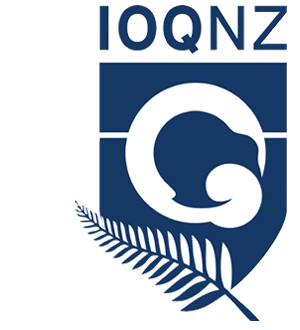Most professional bodies have, for some time, encouraged members to take part in and record activities related to Continuing Professional Development (CPD) . The Institute of Quarrying NZ (IOQNZ) introduced this scheme in New Zealand in 2012 – one almost identical to that operated in the UK.
WHAT IS CPD?
CPD has been defined as;
The systematic maintenance, improvement and broadening of knowledge and skill and the development of personal qualities necessary for the execution of professional and technical duties throughout the practitioner’s working life’.
Or
A record of a ‘true’ learning experience that can be used, or progressed in a person’s area of work.
CPD is the process of continual improvement and personal development that all professional persons should undertake to build upon the basic and advanced professional qualifications that they have attained.
The process of participating in and recording CPD demonstrates the commitment of the member to maintaining professional competence.
CPD is the responsibility of the individual. It requires a continuous and systematic approach to personal development which identifies the need to acquire and develop knowledge and skills in a defined area of expertise.
CPD requires a documented plan to achieve a predetermined goal. Ad hoc learning will enhance the planned learning and may open up other avenues of gaining knowledge which may help determine future medium and long term goals.
THE VALUE OF CPD:
In the modern world, technology, commerce, regulation and the expectations of society may change rapidly so the IOQNZ recommends that its members keep abreast of changes and advances of the industry by undertaking CPD.
A written record of CPD can serve several purposes;
- The record serves as a permanent testimony to the commitment of that member to keep up to date with advances in technology, materials, systems, customer care, legislation and commerce.
- A CPD record is now a mandatory requirement to renewal of Quarry Managers’ Certificates of Competency (CoC). And was gazetted by WorkSafe NZ in 10 Dec 2015.
- The WorkSafe CPD Guidelines (June 2016) request that each CPD record is based on one of four key areas:
* Operating and safety systems
* Legislation
* Emergency Management
* Leadership
CPD HOURS:
![]() WorkSafe have set out the number of hours required each year as a minimum requirement:
WorkSafe have set out the number of hours required each year as a minimum requirement:
- A-Grade 24 hours per year; 120 hrs per five year period, comprising 16 hours formal and 8 hours informal learning training for each competency,
- B-Grade 12 hours per year; 60 hrs per five year period, comprising 8 hours formal and 4 hours informal learning training for each competency
ACTIVITY ALLOWANCES:
Each activity undertaken should be evaluated in hours.
 The WorkSafe NZ CPD Guidelines provides a guide to time allowances has been produced giving examples.
The WorkSafe NZ CPD Guidelines provides a guide to time allowances has been produced giving examples.
Examples of activities that may contribute towards CPD are as follows:-
- Evening technical meetings
- Day seminars and conferences
- Research
- Mentoring
- Short training courses
- Training videos
- Presenting paper at a relevant industry conference
- Authorship or refereeing of papers
- Project leadership and team building
- etc
Gaining further academic qualifications is valuable evidence that you are expanding or maintaining your knowledge base and should be recorded.
RECORDING AND CERTIFICATION OF YOUR CPD:
 WorkSafe recommend that as a minimum, your CPD record should be recorded using the WorkSafe Log Book
WorkSafe recommend that as a minimum, your CPD record should be recorded using the WorkSafe Log Book

IOQNZ On-line CPD
The IOQNZ has developed a new on-line CPD system which allows each member to record all CPD learnings. This system, launched 20 Feb 2017, reflects the requirements of WorkSafe NZ, and each step allows the member to choose from a drop-down menu.
Entering data into IOQNZ on-line CPD system requires the following steps
- In the membership data module, update membership details, including choosing to add CPD records
- In the CPD system you will be required to add member certificate (eg A-Grade, B-Grade etc), CoC Number, issue date (expiry date default is 5 years from issue)
- Add CPD records – each member chooses the type of learning (formal or informal) and
- Competency from the drop-down menu
- Number of hours,
- Learning method – seminar, webinar, course field trip etc, and
- Describes the key learnings from the CPD event.
In addition the IOQNZ on-line CPD system allows for uploading supporting documents for each CPD record added. The preferred format for uploading files is PDF. However Microsoft Word, Excel, plain text files can also be uploaded.
The unique feature with IOQNZ on-line CPD system is the table summarising CPD progress – a simple at-a-glance check for every member to confirm how well their CPD is progressing vs. the target hours set by WorkSafe:

AUDITING:
WorkSafe NZ have indicated they may call upon the CPD record of a member at any time for the process known as auditing. In an audit, the Worksafe verified IOQNZ auditors may check the claims made by a member against known events and with the verifiers.
It is recommended that in addition to the on-line system, each member keeps originals of supporting documentation.
It is proposed that the IOQNZ will advise WorkSafe when a member has accumulated 120 hours of CPD activity.
